Devin the albatross chick isn’t the first to hatch in Heather Devin’s front yard, but it is the first that’s been dubbed with the family’s last name.
He’s one of 18 wobbly, disheveled, white-masked Laysan albatross chicks that are finding their feet in Princeville, and one of several that hatched in a residential neighborhood — part of a colony that’s been there for more than 15 years.
Laysan albatross have annually graced Devin’s lawn for years, nesting and having chicks, and attracting a little stream of onlookers while they’re at it.
“They’re cute and my kids grew up with them,” she said. “But, they bring people by a lot to watch them, and they (the birds) can be a bit loud. Sometimes we get up and, ‘hey, there goes the albatross again.’”
She has three chicks in her yard — one nesting in the front and two in the shady backyard — each standing a little more than a foot high with their feathers looking windblown and curious eyes watching everything.
“The ones in my yard watch the other birds fly overhead,” said Cathy Granholm, who hosts walking tours of the nests during the season and has been collecting data on the albatrosses on Kauai’s North Shore for 15 years.
She’s monitoring the 18 chicks now, making the same rounds she did when they were just eggs. She lets those who own the yards where they nest name the chicks, and some residents — the Devin family included — have made signs with the birds’ names on them to place near the nests.
As Devin and Granholm chatted about the health of one of the chicks in the backyard on a sunny Thursday morning, Emily Eryou and her husband walked by. He headed for a shady tree while she trained a wildlife lens on the albatrosses.
“We come here every year and have been for 25 years,” the Florida resident said as she snapped photos. “The first time we saw one, we didn’t know what it was and we said, ‘whoa, that’s one giant seagull.’”
Albatross return to Kauai every year around November. Already mated pairs (albatross mate for life) perform reunion rituals upon their return, as they’re solo when they are out to sea.
Those that aren’t mated do a lot of socializing. They usually start breeding at 6 or 7 years old and start returning to the island at 3 or 4 years old to start looking for a mate of their own. There are complicated mating dances and loud vocalizations as the birds socialize.
Though mating season has given way to chicks wobbling about their nests, Granholm says she’s still expecting the young birds — the 3 and 4 year-olds — to return in the next few weeks.
•••
Jessica Else, environment reporter, can be reached at 245-0452 or jelse@thegardenisland.com.


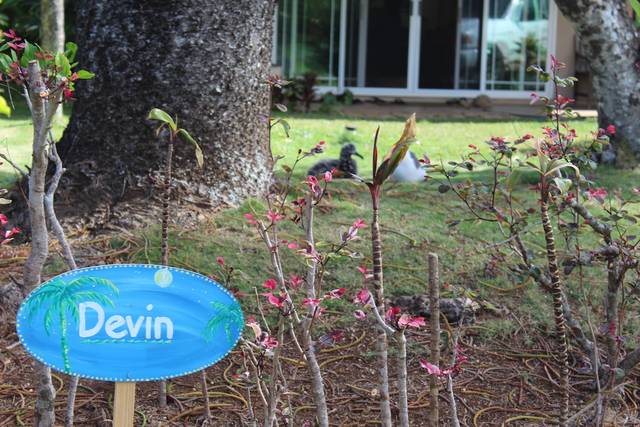
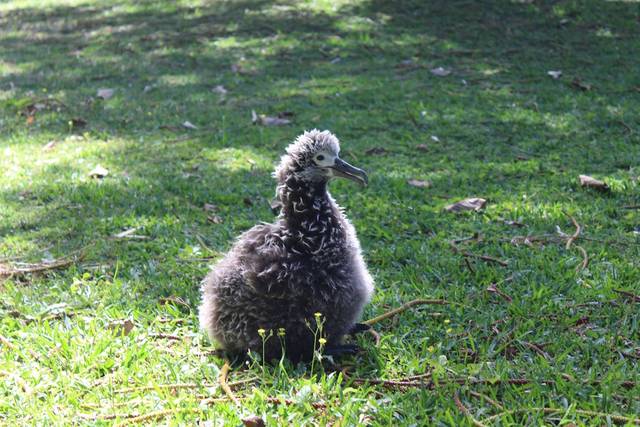
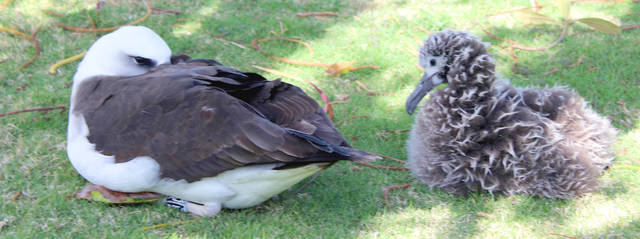
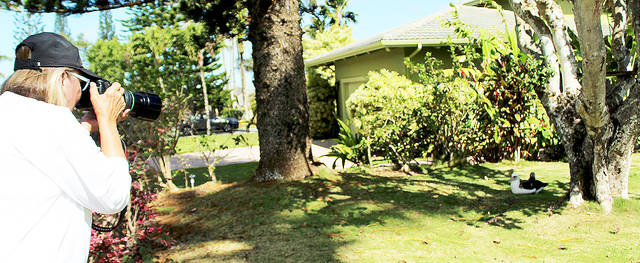
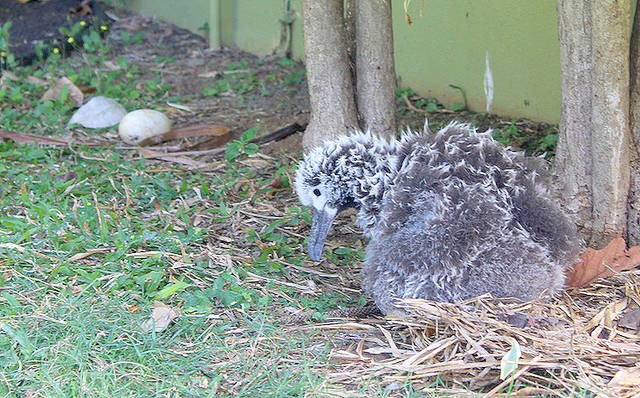
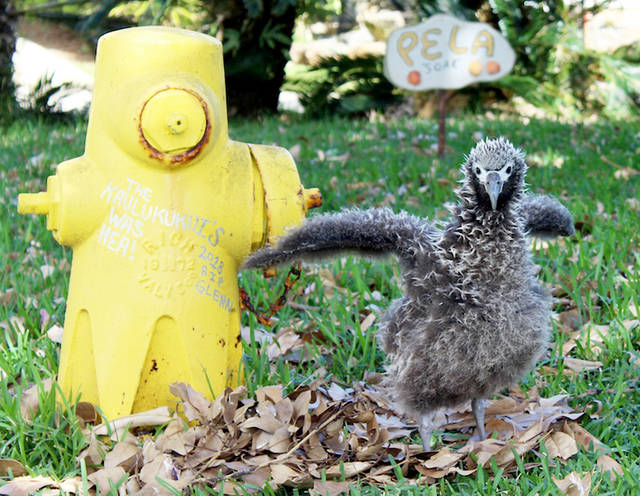
Cute and powerful.